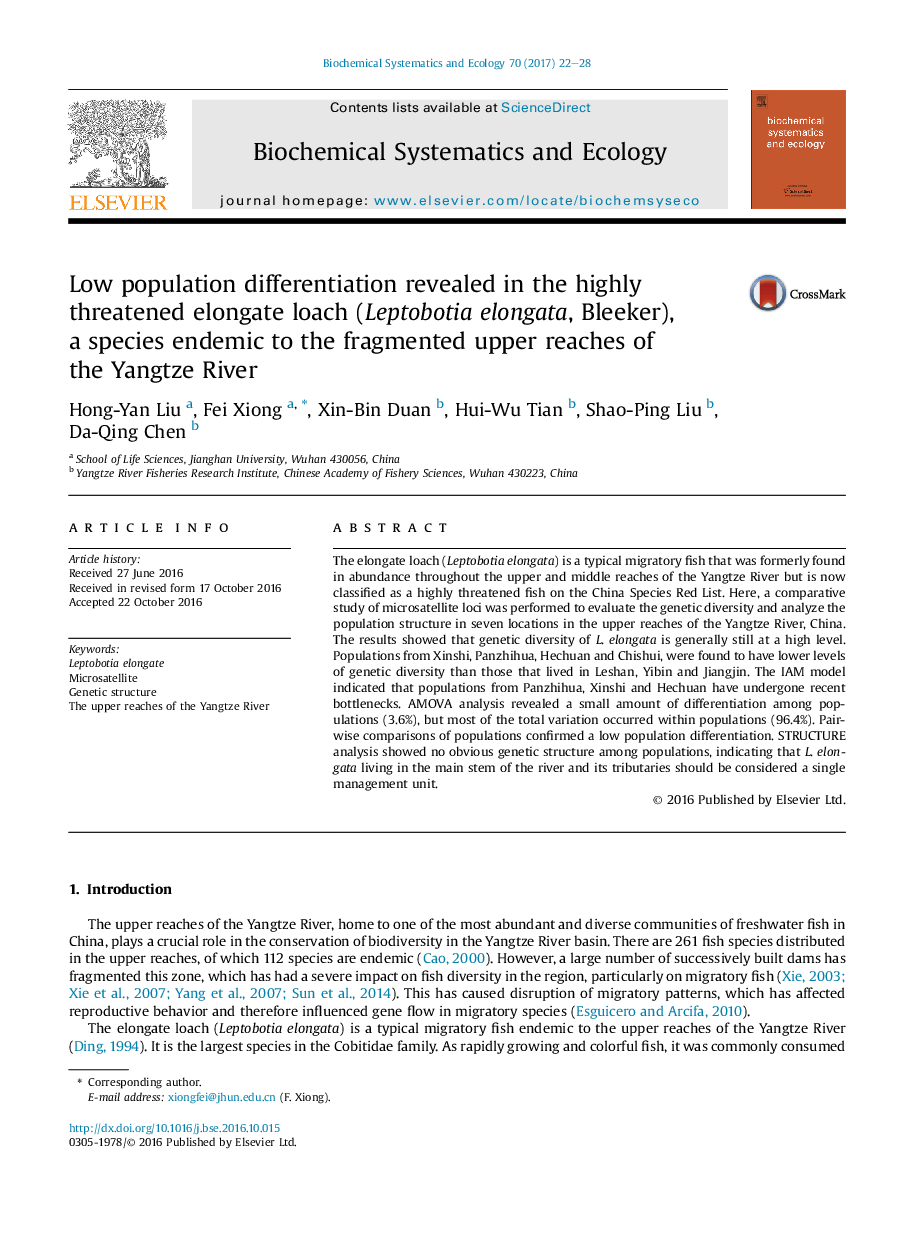| Article ID | Journal | Published Year | Pages | File Type |
|---|---|---|---|---|
| 5154959 | Biochemical Systematics and Ecology | 2017 | 7 Pages |
Abstract
The elongate loach (Leptobotia elongata) is a typical migratory fish that was formerly found in abundance throughout the upper and middle reaches of the Yangtze River but is now classified as a highly threatened fish on the China Species Red List. Here, a comparative study of microsatellite loci was performed to evaluate the genetic diversity and analyze the population structure in seven locations in the upper reaches of the Yangtze River, China. The results showed that genetic diversity of L. elongata is generally still at a high level. Populations from Xinshi, Panzhihua, Hechuan and Chishui, were found to have lower levels of genetic diversity than those that lived in Leshan, Yibin and Jiangjin. The IAM model indicated that populations from Panzhihua, Xinshi and Hechuan have undergone recent bottlenecks. AMOVA analysis revealed a small amount of differentiation among populations (3.6%), but most of the total variation occurred within populations (96.4%). Pairwise comparisons of populations confirmed a low population differentiation. STRUCTURE analysis showed no obvious genetic structure among populations, indicating that L. elongata living in the main stem of the river and its tributaries should be considered a single management unit.
Keywords
Related Topics
Physical Sciences and Engineering
Chemistry
Organic Chemistry
Authors
Hong-Yan Liu, Fei Xiong, Xin-Bin Duan, Hui-Wu Tian, Shao-Ping Liu, Da-Qing Chen,
